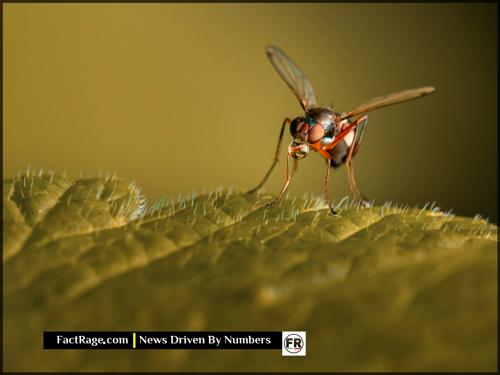GENEVA, SWITZERLAND – The World Health Organization (WHO) is set to release its annual World Malaria Report on July 18, a critical update that will provide the first significant real-world data on the rollout of two new vaccines in the global fight against the disease.
- A New Era of Prevention – The report is expected to detail the initial deployment and efficacy of the RTS,S and the newer R21/Matrix-M vaccines, representing a major shift in malaria prevention strategy.
- An Evolving Threat – A key focus will be the growing challenge of resistance, both in mosquitoes to insecticides and in the malaria parasite to frontline antimalarial drugs.
- Tech on the Frontlines – Data will likely highlight the use of innovative technologies, including advanced data modeling and new diagnostic tools, to track and combat the disease more effectively.
The forthcoming report offers a data-driven look at how scientific innovation is squaring off against an evolving parasite and its mosquito vector. Global health bodies, scientists, and governments will be scrutinizing the numbers to measure progress and refine strategies in a battle that, according to the last report, still caused 249 million cases and 608,000 deaths in a single year.
An Evolutionary Arms Race, Fought with Data
![]() The global campaign against malaria has transformed into a high-stakes conflict between human ingenuity and a parasite’s relentless evolution. The upcoming World Health Organization report is our first major scorecard in this new era. It will reveal how groundbreaking vaccines, advanced data modeling, and other technologies are performing against an ancient biological threat that is constantly adapting to our best defenses.
The global campaign against malaria has transformed into a high-stakes conflict between human ingenuity and a parasite’s relentless evolution. The upcoming World Health Organization report is our first major scorecard in this new era. It will reveal how groundbreaking vaccines, advanced data modeling, and other technologies are performing against an ancient biological threat that is constantly adapting to our best defenses.
Read On…
Here are the three key scientific fronts to watch: the real-world impact of new vaccines, the growing threat of resistance, and the emerging technologies shaping the future of global health.
What Vaccine Data Will Reveal About the New Arsenal

For decades, the primary tools against malaria have been insecticide-treated bed nets, indoor spraying, and antimalarial drugs. The upcoming report marks a pivotal moment by introducing a new pillar: vaccination. The world will get its most detailed look yet at the impact of the RTS,S vaccine from GSK, which has been in wider use for several years, and the more recently deployed R21/Matrix-M vaccine, developed by the University of Oxford.
Key questions the report is expected to answer include: How many children have been reached by these vaccine programs? What does early data show about their effectiveness in reducing severe disease and death outside of clinical trials? The WHO’s prequalification of the R21 vaccine in late 2023 was hailed for its potential to dramatically increase supply, and the report may provide the first glimpse into how this is affecting vaccination coverage in high-burden African nations.
Why Tracking Resistance Is a Scientific Arms Race
While vaccines offer new hope, the report will also serve as a crucial check-up on an older, persistent problem: resistance. The malaria parasite, Plasmodium falciparum, is notoriously adaptable, and strains resistant to artemisinin-based combination therapies (ACTs), the most effective treatment, are a major concern. The WHO will present data on the geographic spread of this resistance.
Equally important is the status of the Anopheles mosquito. Decades of reliance on pyrethroid insecticides in bed nets has led to widespread resistance, making this core intervention less effective in some areas. The report will likely detail the extent of this resistance and highlight the push for new types of insecticides and combination nets. The data presents a classic evolutionary arms race: for every human innovation, the parasite and its vector adapt, forcing science to innovate again.
How New Technology Is Changing the Fight
Beyond drugs and vaccines, technology is playing an increasingly vital role. The 2025 report is anticipated to touch upon the use of advanced tools that are sharpening the response to malaria. These innovations range from an expanded use of sensitive rapid diagnostic tests to sophisticated geospatial mapping.
Health organizations are using satellite data combined with climate information to predict malaria transmission hotspots, allowing for more targeted and efficient use of resources. Furthermore, while still in development and not yet in wide use, the science of genetic engineering, including “gene drive” systems designed to reduce mosquito populations, remains a significant area of research. The report may offer updates on the regulatory and ethical frameworks being developed for such future technologies, providing a window into the next generation of malaria control.
A Scorecard for a Scientific Arms Race
![]() The 2025 World Malaria Report will be more than a public health document; it will be a crucial progress report in an ongoing evolutionary arms race. It pits our most advanced tools—from novel vaccines to predictive data models—against the relentless adaptation of a microscopic parasite and its mosquito host. The findings will provide a critical data point on our trajectory, measuring not just the ground we’ve gained but also mapping the complex scientific frontiers we must still cross to win this long-standing battle for human health.
The 2025 World Malaria Report will be more than a public health document; it will be a crucial progress report in an ongoing evolutionary arms race. It pits our most advanced tools—from novel vaccines to predictive data models—against the relentless adaptation of a microscopic parasite and its mosquito host. The findings will provide a critical data point on our trajectory, measuring not just the ground we’ve gained but also mapping the complex scientific frontiers we must still cross to win this long-standing battle for human health.














